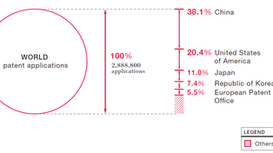What are the differences between integrated circuit layout design and copyright?
- Admin

- May 23, 2023
- 1 min read

Copyright law covers a range of creative works, including written words, graphics, and symbols, which serve to express the personality and ideas of their authors. However, the expression of ideas in integrated circuits is limited by the technical functions they perform, and there is little room for designers to express their personality. Consequently, integrated circuits are not protected by copyright.
Integrated circuit layout design, on the other hand, falls somewhere between copyright and patents and is sometimes referred to as "industrial copyright." Unlike copyright, the layout design right does not prevent others from creating similar works, and it provides weaker protection than copyright. It permits reverse engineering of layout designs and only prohibits non-creative replications. In contrast, copyright law requires that appropriate modification be made with caution as it may result in infringement.
Furthermore, the term of protection for layout designs is much shorter than that for copyrighted works, with a term of 10 years starting from the date of registration or the date of first commercial exploitation anywhere in the world. In most countries, copyright protection extends to the author's life plus 50 years after their death or 50 years after the completion of the work if the author is an entity.






































Comments